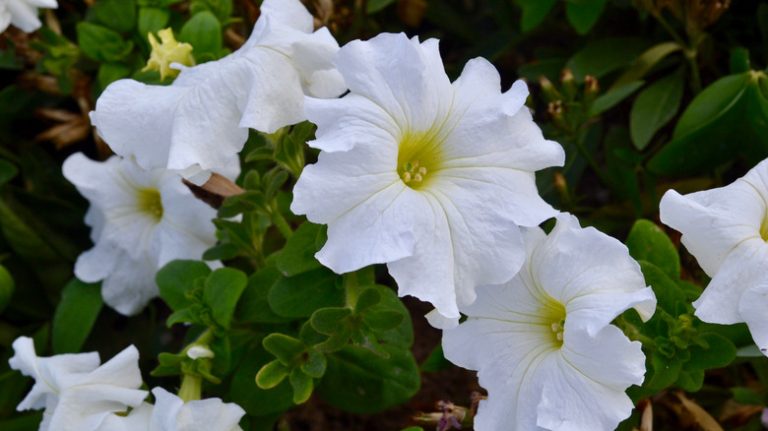As the summer fades and the cool breeze of fall starts to bring a chill to the air, gardeners need to turn their attention to the care of their roses. Roses, especially climbers, require some special care in the fall to ensure that they bloom beautifully in the summer. The foliage and climate play a big part in the overall health and blooming potential of your roses, so taking the necessary steps now will pay off in the long run.
One of the first steps you should take in fall rose care is to remove the deadheading and watering routine. Whether your roses are still blooming or not, they need time to prepare themselves for their dormant period. Begin by removing any dead or damaged leaves and prune away any weak or crossing branches. This will help to maintain the health and structure of the rose bush.
Once you have removed the deadheading and watering routine, it’s time to start protecting your roses from frost. This is especially important if you live in an area with harsh winters. You can do this by mounding up soil around the base of the rose bush to insulate the roots and cover the crown with a layer of mulch. If you have a climbing rose, you may also want to consider providing a support structure and removing any weak or damaged canes.
When it comes to mulching your roses, timing is key. You should begin the mulching process when the temperature drops to around 7 degrees Celsius (45°F). This will help to slow down the growth of the roses and protect them from any early frost. A layer of mulch acts like a blanket, keeping the soil warm and protecting the roots from extreme temperature fluctuations. It also helps to retain moisture in the soil, which is especially important during the dry winter months.
In addition to mulching, you should also consider providing your roses with a little extra TLC during the fall. Giving them a good drink of water before the first frost will help to hydrate them and preserve their overall health. You can also apply a sealant or anti-transpirant spray to the leaves to prevent moisture loss. This is especially helpful if you have a variety of hybrid teas, which tend to have thinner leaves and are more prone to winter damage.
Overall, fall rose care is essential for ensuring that your roses not only survive the winter but also thrive and bloom beautifully in the summer. By following a few basic steps, such as removing deadheading, watering, and protecting your roses from frost, you can give them the best chance at a healthy dormancy and a successful growing season the following year. So roll up your sleeves, grab your pruning shears, and get to work!
9 Fall Care Tips for Roses
As fall approaches, it’s time to start thinking about how to care for your roses to ensure they bloom beautifully in the summer. Follow these nine proven fall care tips to keep your roses healthy and thriving:
| 1. Variety | Choose rose varieties that are known to be winter hardy and disease resistant. This will give your roses a better chance of surviving the winter and thriving in the summer. |
| 2. Begin by growing roses in an excellent location with plenty of sunlight and good drainage. | Make sure to plant your roses in a spot that receives at least six hours of sunlight per day and has well-draining soil. Roses love sunlight and well-drained soil. |
| 3. Use proven winter protection methods. | Before the first frost, apply a layer of mulch around the base of your rose bushes to protect their roots from freezing temperatures. This will also help retain moisture in the soil. |
| 4. Love your roses with regular watering. | Roses need consistent watering, especially during dry periods. Water deeply and thoroughly, making sure the soil is moist at least 6 inches below the surface. |
| 5. Watch for signs of pests and diseases. | Inspect your roses regularly for any signs of pests or diseases. Treat any issues promptly to prevent them from spreading and damaging your plants. |
| 6. Start deadheading to stimulate new blooms. | Remove spent blooms by cutting them above a leaflet with five leaflets to encourage new growth and more blooms. Deadheading also helps prevent disease and pests. |
| 7. Leave the knockouts till spring. | Wait until the following spring to heavily prune knockout roses. These roses tend to deal better with winter conditions when left unpruned until the new growth begins. |
| 8. Ensure proper air circulation. | Trim any dead or thick branches to improve air circulation within the rose bush. This will help prevent diseases caused by trapped moisture and improve overall plant health. |
| 9. Cover roses to protect against harsh winter winds and frost. | Use a breathable cover, like burlap or frost cloth, to protect your roses from harsh winter winds and frost. Wrap the cover around the plant, creating a seal at the base. |
By following these fall care tips, you can ensure that your roses stay healthy and in the best condition possible during the winter months. With proper care and attention, you’ll be rewarded with beautiful blooms in the summer.
For more rose care FAQs and helpful tips, check out our video on fall rose care.
Slow Down Feeding
As fall rolls around, it’s time to slow down on the feeding of your roses. While feeding your rose bushes is an important part of their overall health and growth, it’s best to hold off as summer comes to an end. This will help seal in the nutrients and support the rose bushes during the cold winter months.
Before decreasing the frequency of feeding, make sure your roses are well-covered, but not completely above ground level. Ideally, the rose bushes should be trimmed back to about half of their moulton height. Remove any dead or damaged rose canes, as this will help improve the overall health of the plant.
If you’re unsure about what to do with your roses when it comes to fall care, it’s best to leave them be until next spring. However, if you notice any diseased or damaged leaves, it’s important to remove them and dispose of them properly. This will help prevent the spread of diseases and avoid confusion when it comes to taking further steps in caring for your roses.
Another important step in fall rose care is to improve the overall cleanliness of the rose bushes. By removing fallen leaves and trimming one-third of the foliage, you can help reduce the chances of diseases and improve air circulation around the plants. This step is especially important in areas with higher humidity or prone to extreme temperatures.
When it comes to watering your roses in the fall, it’s best to keep the soil moist, but not soggy. Roses generally require less water during the cooler autumn months. However, make sure to provide sufficient watering, especially if conditions are dry or if you’ve recently planted new roses.
Finally, one of the easiest ways to ensure your roses survive the winter is to cover the base of the rose bushes with a layer of mulch. This will help regulate soil temperatures and provide insulation for the roots. Before covering the base, make sure to remove any diseased or damaged leaves, as they may harbor spores and lead to further plant health issues.
By following these steps and practicing good fall rose care, you can improve the overall health and blooming of your roses when spring comes around.
Avoid Deadheading
One of the most common misconceptions shared by rose gardeners is the thought that deadheading is necessary for the overall health and blooming of roses. However, this is not the case. Deadheading is the practice of removing spent roses from the bushes, but it can actually have detrimental effects on the rose’s ability to survive the winter and bloom again in the summer.
Deadheading is often done in the fall months to clean up the garden and remove any faded blooms. While this may improve the overall appearance of the rose bushes, it can actually hinder their ability to go dormant and survive the colder winter months. When you deadhead roses, you remove the spent blooms along with some of the foliage. This foliage is important for protecting the rose bush from frost and other harsh winter conditions.
Rose bushes tend to go dormant as the temperatures get colder, and this is the ideal time for the rose to prepare for winter. The foliage helps to insulate the rose bush and protect it from the cold. By deadheading, you are removing this insulation and leaving the bare, weak stems exposed to the elements.
In addition to protecting the rose bush from the cold, the leaves also help to trap moisture and prevent fungal diseases. By removing the foliage through deadheading, you are increasing the chances of fungal spores taking hold and causing problems for the rose bush later on. While some rose varieties may require deadheading to encourage reblooming, most roses do not. It is important to know your specific rose variety and its requirements.
If you are unsure about whether to deadhead your roses or not, it is best to leave the fading blooms on the bush. As the temperatures drop and the rose bush goes dormant, the remaining foliage will help to protect it from the harsh winter conditions. The faded blooms can also add interest to the garden and provide food and shelter for birds and insects.
Deadheading can also be a time-consuming task, especially if you have a large rose garden with many bushes. Instead of spending time and effort deadheading, you can use that time to prepare your rose bushes for winter. Some basic steps to ensure healthy, winter-ready roses include pruning them back to a height of around 9 inches, mulching around the base of the bush to insulate the roots, and covering the bush with a protective layer like burlap or a specialized rose cover.
In summary, deadheading is not necessary for the overall health and blooming of roses. While it may improve the appearance of the garden, it can actually hinder the rose’s ability to survive the winter and bloom again in the summer. Instead of deadheading, focus on preparing your roses for winter by following some basic steps and protecting them from harsh winter conditions. By avoiding deadheading, you can ensure that your roses have the best chance of thriving and blooming beautifully in the summer.




